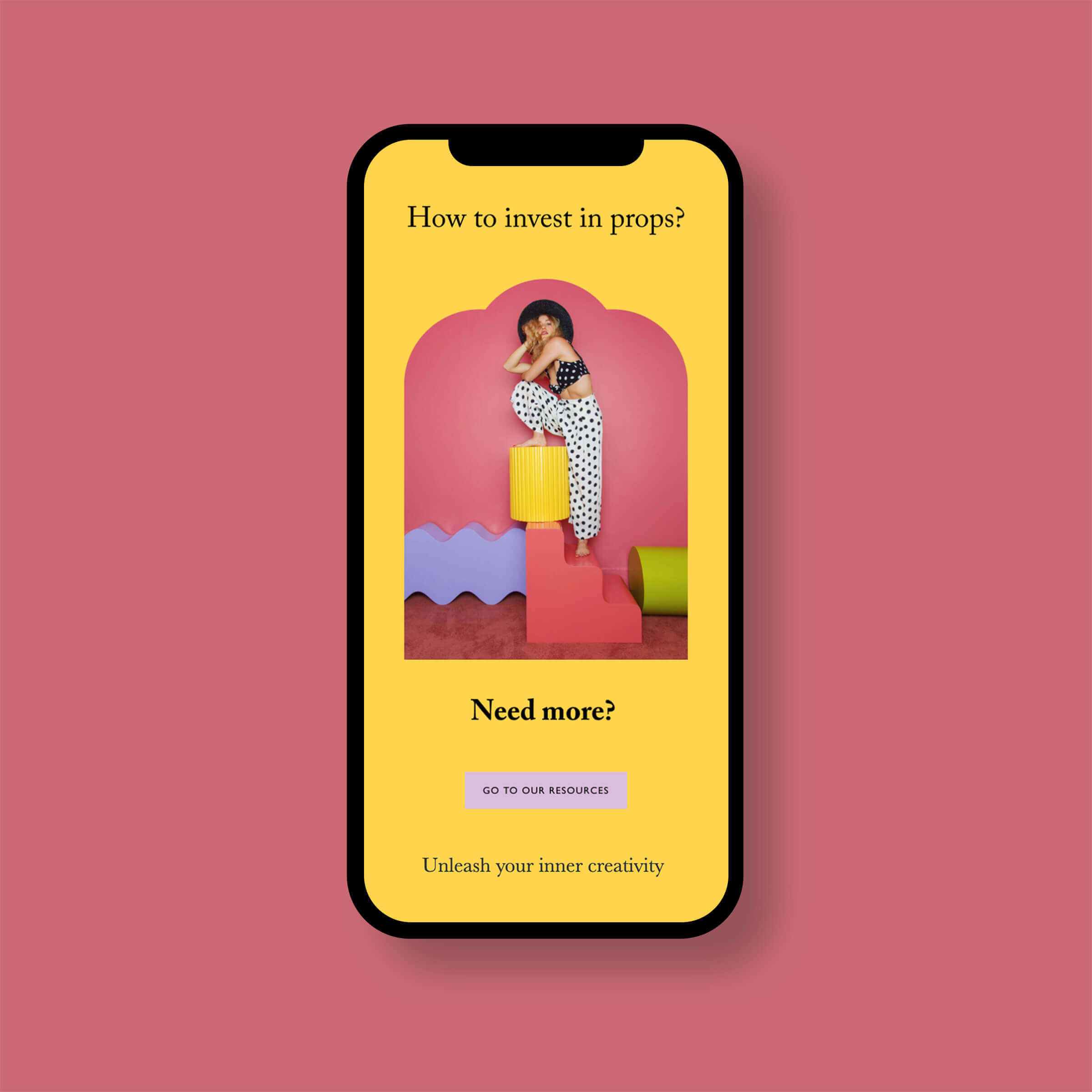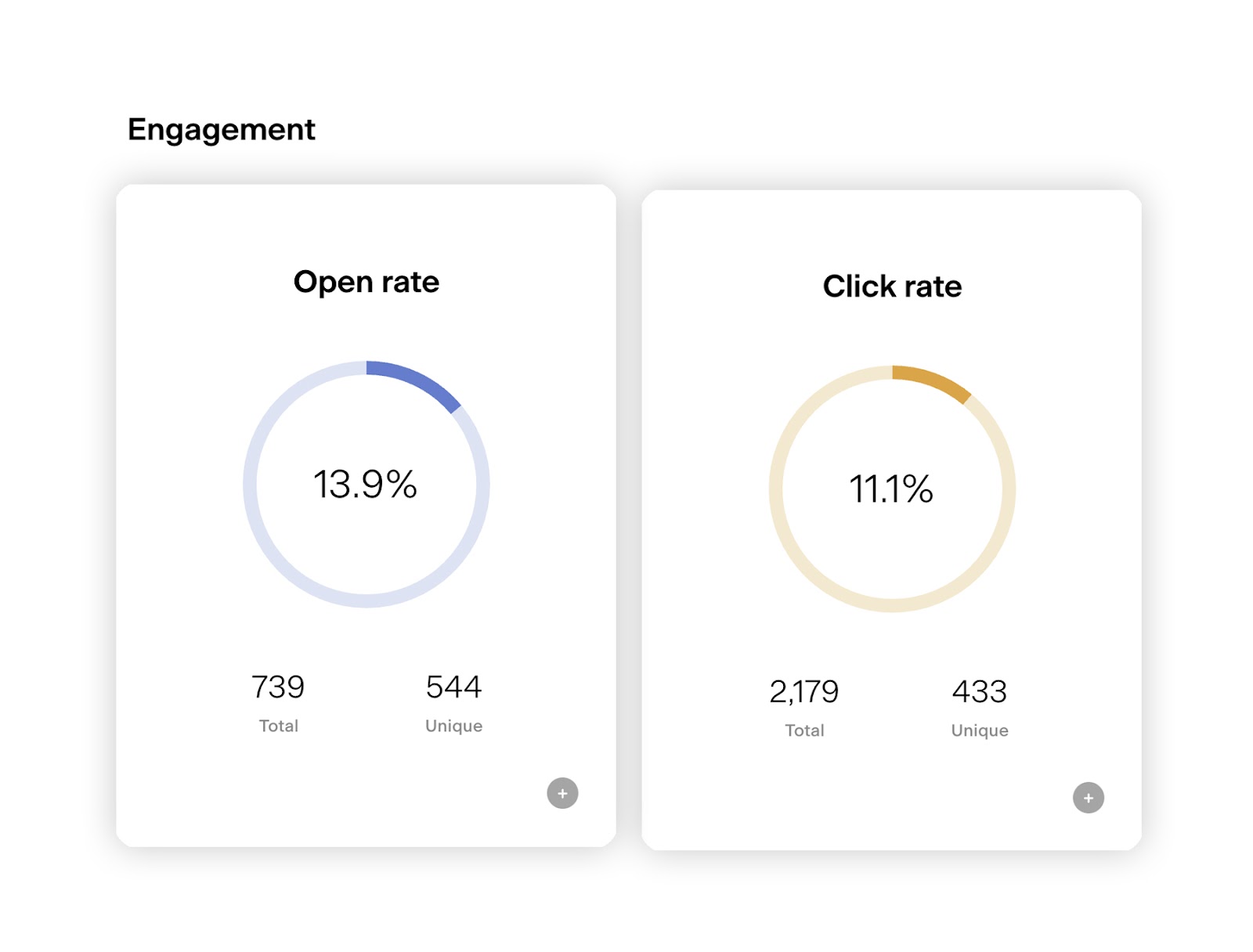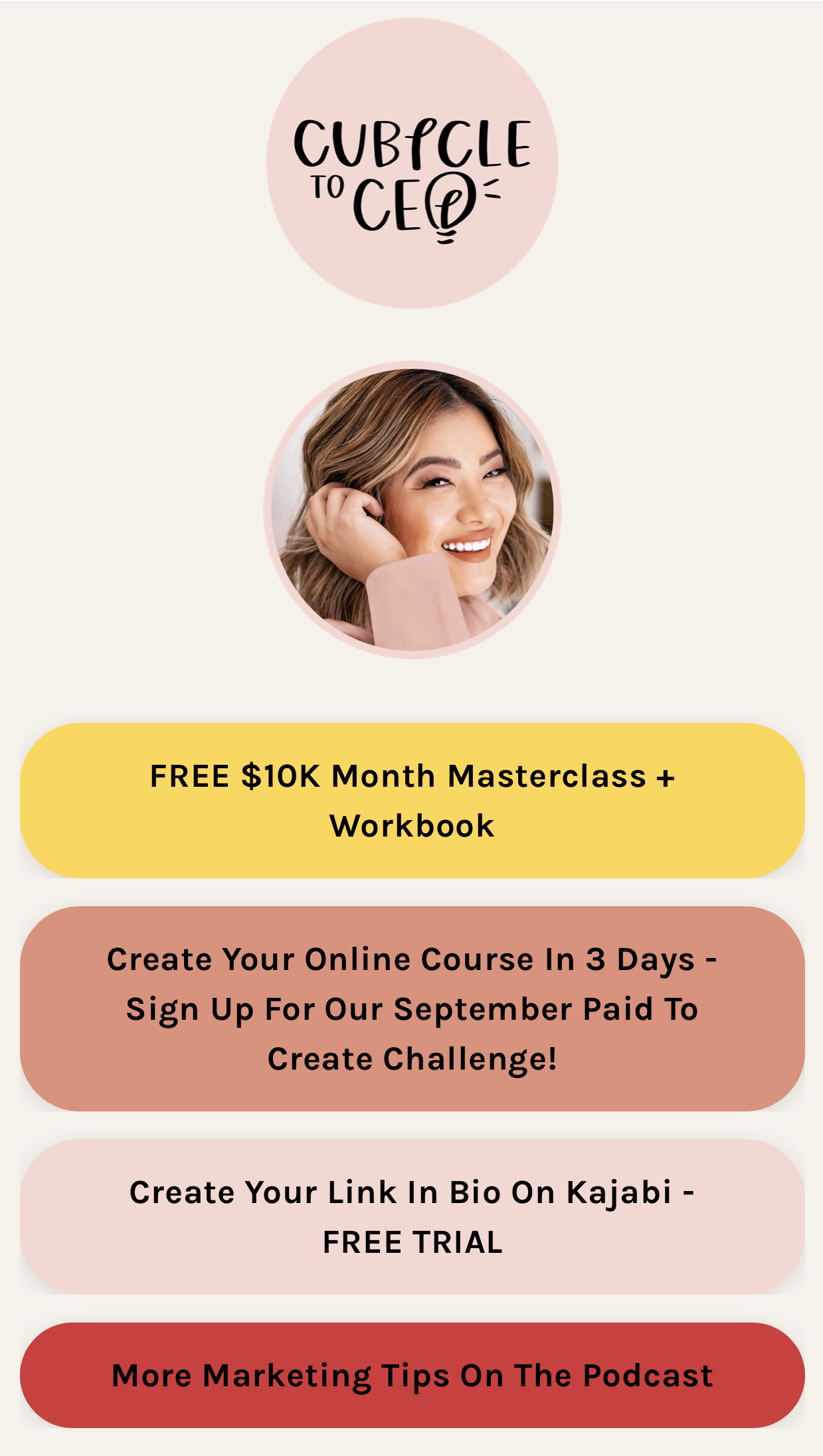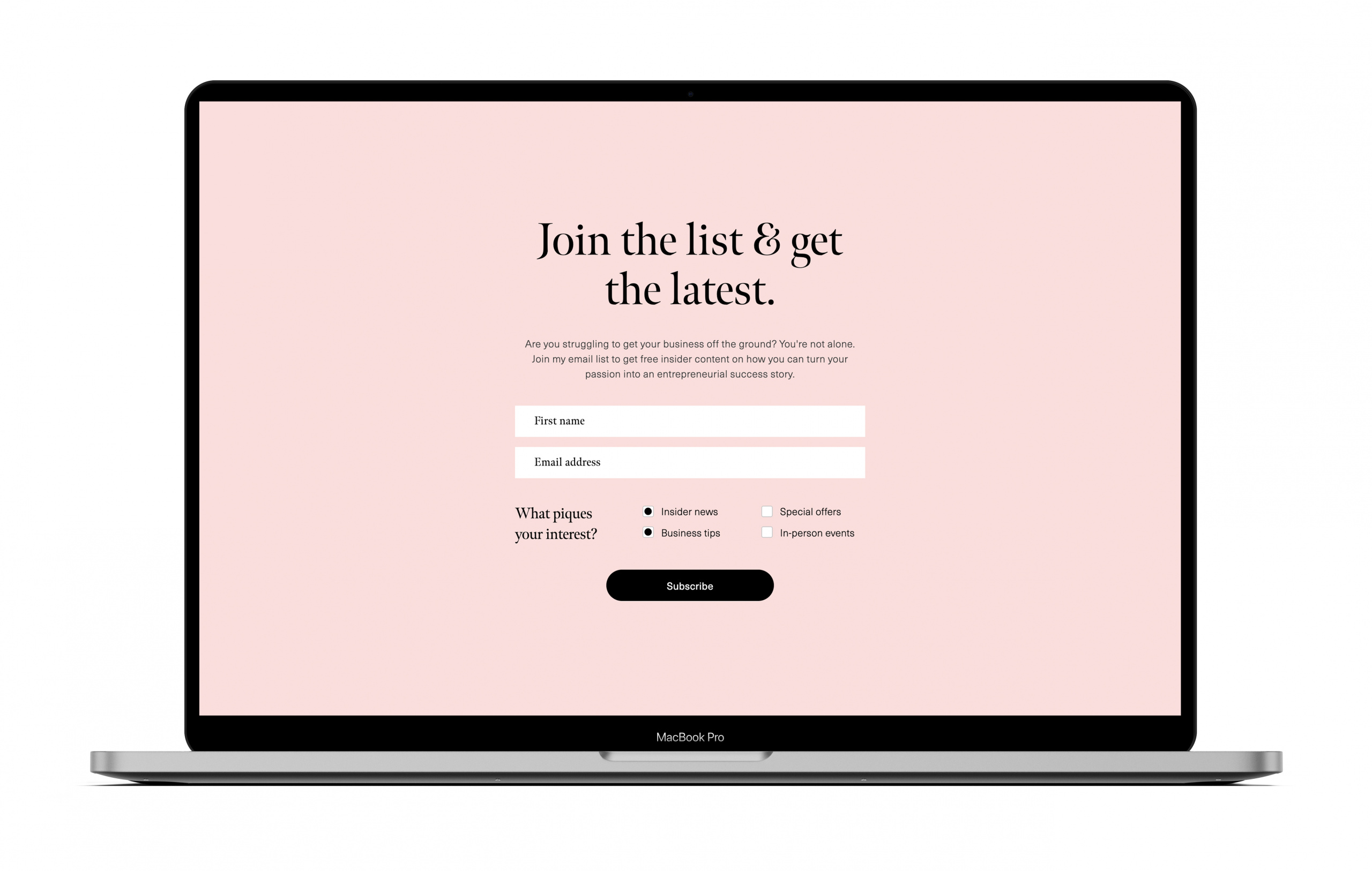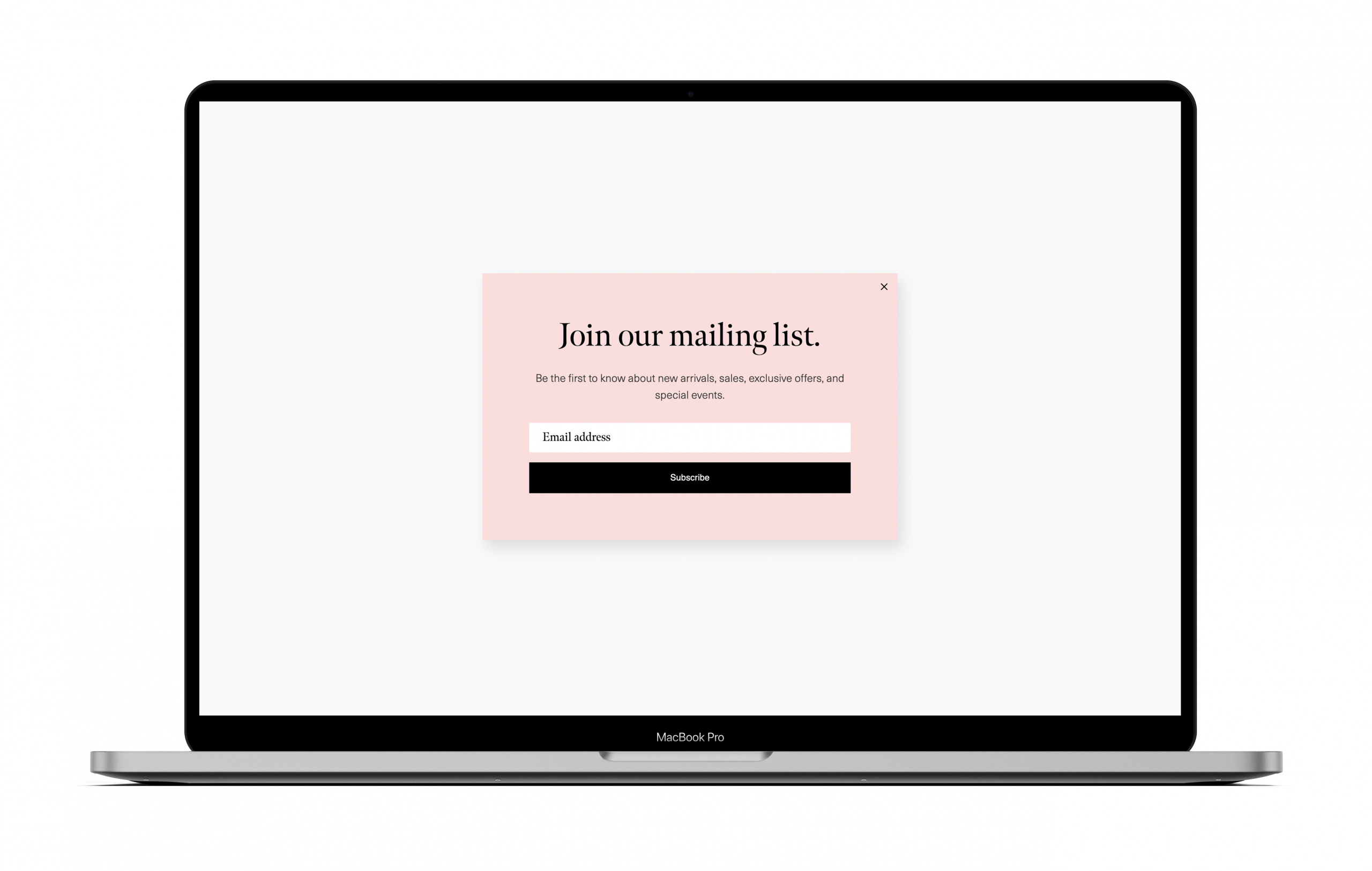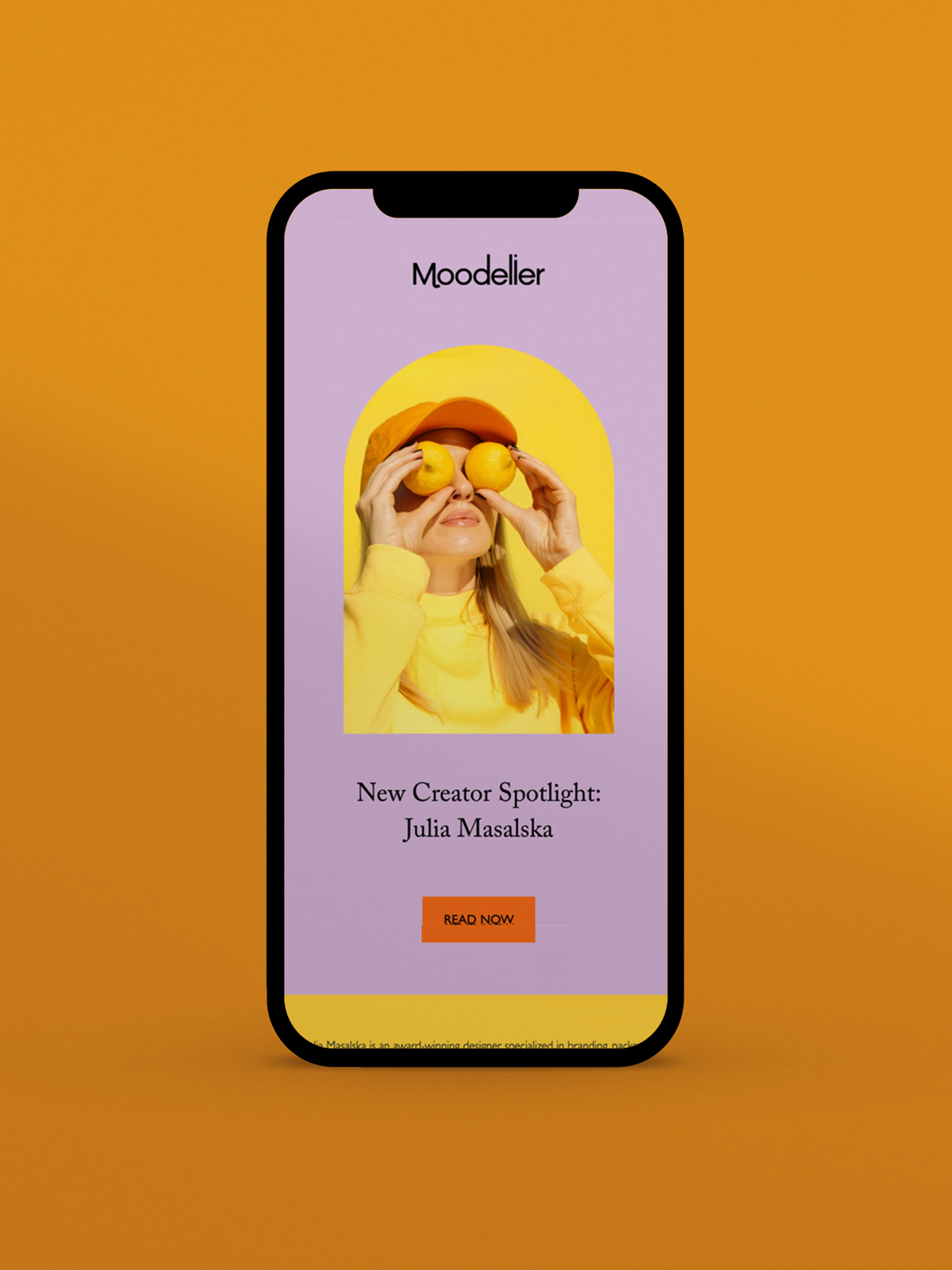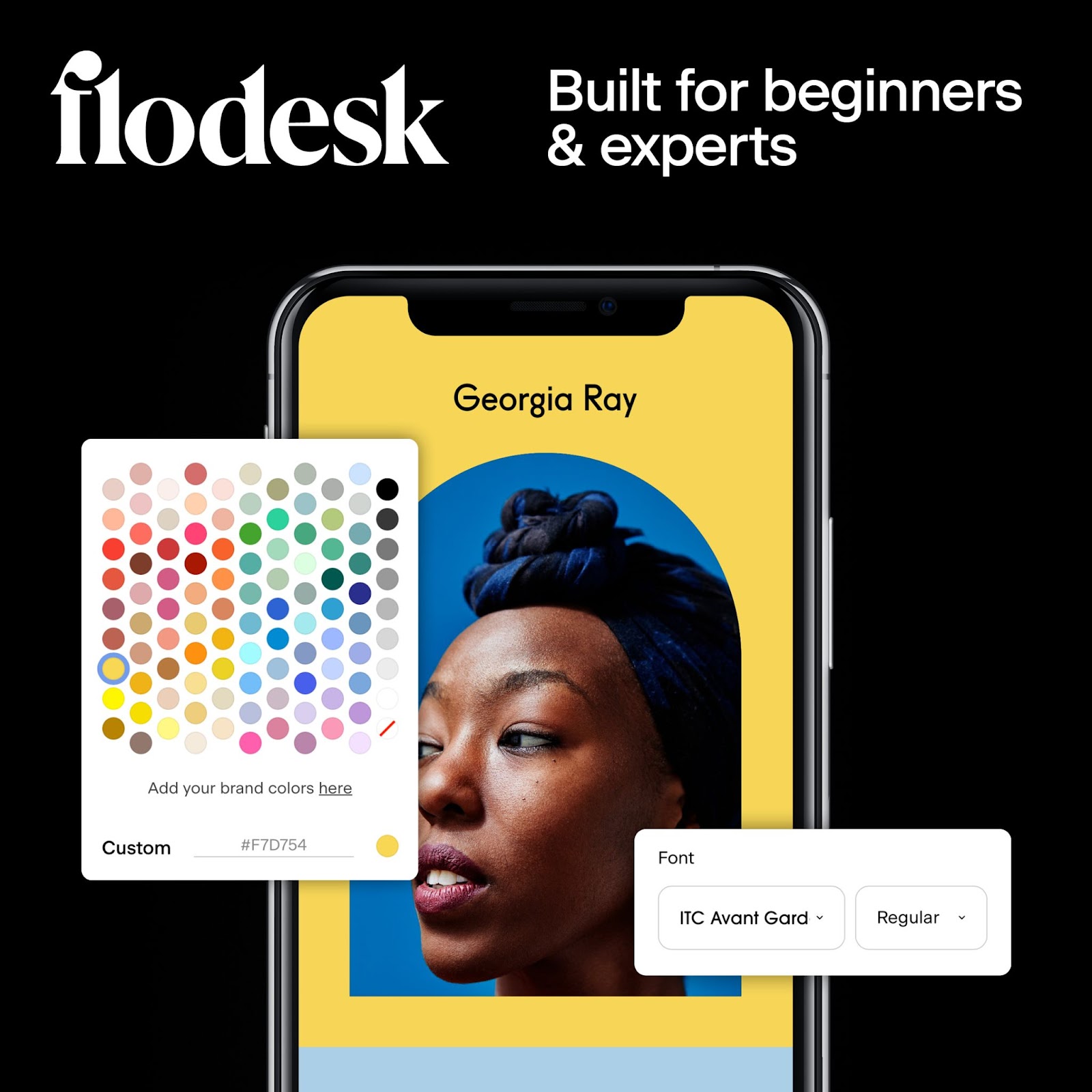5-Step Guide To Email Marketing For Small Business (+10 Tips)
Table of Contents Jump to:
Jump to:
Table of contents
Email marketing is one of the most powerful tools you can use to engage your customers and build your small business. In fact, 59% of consumers say receiving marketing emails influence their purchase decisions and over half of consumers report buying directly from marketing emails at least once a month.
For small businesses like yours, email marketing can turn a small audience into an online community of loyal customers who are enthusiastic about your offerings. And unlike social media, ads or organic search, email marketing gives you a direct line to audience members who have shown interest in your brand by subscribing to your email list.
We created this guide to help you get your first email marketing campaign off the ground. You’ll learn how to develop a foundation for your emails and how to optimize your email marketing strategy going forward.
Let’s dive in!
5 steps to get started with email marketing
1. Set ultra-specific goals for your email marketing campaigns
Setting goals for your email marketing campaign is one of the most critical steps to take when improving your business. But it’s also one of the steps you’ll probably be reluctant to take—because it seems inconsequential on the surface. In fact, 80% of small business owners don’t keep track of their business goals.
But goals give you a framework for success that allows you to test strategies and see if they’ll lead to your desired outcomes. Ultra-specific goals are actionable and measurable: you should be able to outline tasks that contribute to your goal and use numbers as a reference point for success.
A good place to start is reflecting on why you want to use email marketing for your business. Are you looking to create a community? Are you trying to sell more? Do you want to communicate your expertise to potential clients?
For example, if you want to build a community, you’ll want to grow your email list and retain highly engaged subscribers. You could set a goal to capture 2000 subscribers and maintain a regular open rate of 20%.
Business coach Liz Huber shows how it’s done: She set a goal to grow her list from 0 to 1000 so she could sell her services more efficiently—without spending any money on ads and promoted social posts.
With this goal in mind, she aimed for 30 sign-ups per week. By tracking the sources of her sign-ups, she learned that when she focused on creating content on Medium that included calls to action (CTAs) to subscribe and gave high-quality answers to users on Quora, she saw her sign-ups spike significantly. She was able to grow her list to over 600 subscribers in the first four months!
So when you build your first campaign, decide what numbers you want to hit (e.g., number of subscribers, open rate, click rate or conversion rate) and set a deadline for yourself. A time-bound goal helps you set a date to go back and look at the results of the campaign.
Even if you fall short of your goal, the information you’ll gather about what works and what doesn’t is extremely valuable for your email marketing strategy going forward.
2. Build your email marketing on the right platform
The right email marketing software can make or break your email marketing success. Choosing the right solution is not just about offering subscribers emails they’re excited to get. It’s also about saving you time and effort designing emails, creating workflows and managing your list—all so you can reach more people and grow your business.
This is why you want to choose the right email marketing software for your small business. It’s important to pick email platforms that:
- are simple to set up and easy to use
- have high deliverability rates
- offer intuitive tools to create consistent, visually engaging emails
While there are so many products out there you can use, we’re recommending Flodesk. And it’s not just because it’s our product, but because our customers have seen some great results using the platform—results like increased open and click-through rates; significant time saved; and the freedom to create stunning emails.
With Flodesk, you can execute every stage of your email marketing strategy on one platform. You can make high-performing landing pages for your sign-up forms, create on-brand emails without using design software or code; and build workflows in seconds that let you automate personalized interactions with your subscribers.
Even more, once you’ve sent your emails, built-in analytics help you track your success.
Get unlimited email sends & subscribers with Flodesk
We’ll never increase pricing because your email list is growing
3. Start collecting emails
One of the awesome things about your email marketing channel is that the people who subscribe to your list are likely already interested in your small business. It means you’ve successfully piqued their interest with your social media presence, website or product and they want to keep up with your business and stay on top of special offers.
But how do you get them to subscribe?
An effective way is to offer sign up incentives like discounts. A DMA report shows that 60% of customers sign up for an email newsletter just to receive discounts and deals. So you can leverage pop-ups across your website or embedded forms on specific landing pages to let customers know that they’ll be getting something in return for giving you their email address.
If you can’t offer a discount, another powerful option is offer a freebie, sometimes called a lead magnet, that provides immediate value. These could be free digital downloads like templates, checklists and short guides or content like how-to videos and exclusive training sessions.
Interactive content like a quiz is also a great way to funnel customers into your list. To learn more about how to use quizzes to capture subscribers, check out How to Use A Quiz to Grow Your Email List. And to get more tips on how to collect emails, read 5 High-Converting Places on Your Website to Add Your Opt-in Email Form.
4. Welcome your new subscribers with well-designed emails
The first email that new subscribers receive when they subscribe sets the tone for their relationship with you and your business. This is your chance to thank them for signing up and deliver value to them. Or if you’ve offered a sign-up incentive like a discount or free download, this is where you’ll include links to claim the offer.
This initial welcome email can also draw your customers into your brand “world,” which includes the look and feel of your brand design. Great design communicates your brand identity and can provide a unique aesthetic experience that sets your emails apart from the monotony of your subscriber’s inbox.
Here’s an example from entrepreneur and Flodesk member Moodelier, showing how she’s using a welcome email to draw her audience into her world:
Things to learn from this example:
- Visually appealing design: She starts the email with a bold and on-brand picture synonymous with her work and copy that instantly gives a feel-at-home welcome—”Why, hello there. So good of you to officially join.”
- Consistent branding: She includes her logo at the very top and uses a bright color palette for the email background and links that represent her brand. The links also match the header image background for ultimate design cohesion.
- Well-formatted email: Each paragraph has no more than two to three lines of text, creating lots of white space and making it easy for readers to digest her message. The black text throughout also makes the email easy to read.
5. Track your email marketing performance
Tracking the performance of your email marketing campaigns is just as important as setting goals for them. We’ve mentioned analytics previously in this guide and that’s because they’re an essential component of successful email marketing strategies.
In the enterprise space, companies that understand and act on insights from their customer data see 85% more sales growth than their peers who don’t. It’s no different for small businesses.
Your analytics will reveal what you need to adjust or change so you can get the most out of your marketing spend on emails and hit your goals.
Some analytics you could keep track of include:
- which subject lines are getting the most open rates
- which email designs and calls to action (CTAs) are producing click-throughs
- where customers might be dropping off in the workflows you create
In the screenshot below, you’ll see a couple of analytics visualized in Flodesk’s Analytics. You can see the open rate percentage on the left and the number of clicks on the right:
As a small business owner, you don’t have to be a data expert to boost engagement and sales with the information from your email analytics. With a good email marketing service, you can easily check in on your metrics on a regular basis.
To learn how to get the most out of your Flodesk Analytics, read Understanding Your Flodesk Email & Workflow Analytics.
Besides keeping track of your analytics, it’s also important to connect email marketing strategy to your sales goals. You can see how well your emails are converting customers by tracking URLs through Google Analytics.
Tracking your email marketing strategies’ success helps you understand whether your tactics are adding value for your subscribers and, in turn, whether email is positively impacting your business.
Now that you know how to get started with email marketing for your small business, let’s look at some great tips for optimizing your campaigns.
10 tips for optimizing your email marketing
1. Look for the right opportunities to collect email addresses
Creating effective emails and workflows is at the core of any email marketing strategy, but building a list of email subscribers is the foundation.
There are several ways you can collect emails and they include:
Social media
Social media is a great place to let people know that you’ve started a newsletter and give them a preview of what they can expect when they sign up. If you’re regularly providing exclusive content in your emails, post snippets or top highlights on your feed along with a CTA to get access to the whole thing.
Here’s an example from personal finance author and New York Times bestseller Ramit Sethi, promoting his newsletter on Twitter:
Your Instagram bio
You can link your sign-up form in your Instagram bio and post opt-in offers like discounts and freebies to your social media pages. Business coach Ellen Yin teases free resources, like her masterclass and workbook, in her Instagram bio and provides a quick link to sign up.
Feature opportunities
Take advantage of other people’s audiences by promoting the benefits of joining your newsletter when you’re featured on podcasts, blog posts or articles. One blogger created a guest blog post for Foundr about using guest blogging to grow your email list. In his author bio he linked, you guessed it, his newsletter!
At checkout
If you run a brick-and-mortar shop, offer a coupon or loyalty program at checkout in exchange for their email address. If you use a digital POS system, you can also capture emails by allowing customers to receive their receipt by email and asking them to opt into your list for updates and discounts. Just make sure to include a checkbox to get their explicit consent to join your email marketing list.
Having an actual strategy for collecting emails not only helps you grow your list in general but also enables you to attract the best-fit subscribers who are also more likely to be your best-fit customers. And the right email marketing software for ecommerce makes it easy to collect emails in one place and give every customer a consistent experience with your brand.
2. Make it as easy as possible for people to subscribe
Once you’ve found the right opportunities to collect emails, the next step is to make it super easy for people to subscribe and join your email list. An effective and popular tactic you can use is to capture subscribers with a full-page signup form (like a landing page) or a pop-up on your website.
Here are examples of a full page form and a pop-up form created with Flodesk:
Read next: 30 small business thank you messages to customers
As you can see from the examples above, you don’t need a website to create beautiful opt-in pages to grow your email list. You can easily build an effective landing page that tells your customers the benefits of subscribing to your email marketing list and sign them up there. To see how it’s done, read How to Build an Email List Without a Website.
Make sure your landing page highlights a freebie or access to discounts, sneak peeks or exclusive information as a bonus for subscribing. The more specific you are about the benefits of subscribing, the more subscribers you’ll get.
On top of that, it needs to be as easy as possible for visitors to input their contact info. Too many form fields will often push people away. You can ask for just an email address and first name. Asking for their first name will also allow you to personalize your subject lines and preview text (sometimes called preheaders) automatically in your emails.
3. Use segmentation to drive engagement
Segmentation means breaking your list into smaller lists based on demographics. Even if your business doesn’t accumulate a massive email marketing audience right away, segmentation can increase the rate at which subscribers open your email and engage with it.
For example, if you’re a photographer and you have some clients interested in booking wedding shoots, other clients looking for professional headshots and others looking for pet photos, you can break out your list into those categories and send them emails that are relevant to their interests and needs.
This way, you’re able to provide content and special offers to your subscribers according to their segments in your email list. And segmented emails generate 58% of all revenue according to a report by DMA.
You’ll be sending each subscriber content and offers that are extremely relevant to them. And because of the relevance of your offers to them, they become more likely to open your emails and respond to your offers because you’re giving them something they actually want.
The email marketing platform you choose should have a segmentation feature. For example, Flodesk makes it easy for you to split your list into groups (or segments), collect the info you need to segment effectively and help you personalize emails according to the segments you create.
4. Personalize subject lines to relate to subscribers
Once you’ve segmented your list, you can start uncovering what each type of customer needs. Then, you can send them emails and offers that feel personal to them as they read. Research even shows that personalizing the subject lines of your emails can increase open rates by 50%.
This is where a little bit of market research goes a long way. Are your audience members complaining about something specific on social media? Do similar challenges keep coming up in client calls? Is there a trend that your audience is dying to know more about? These are questions you can ask to uncover your audience’s key interests, which you can then use in your subject lines.
Look for clues in your audience’s behavior to narrow in on the topics that might grab them as they’re scrolling their inbox. Here are a few places to go when looking to learn more about your audience:
- Communities: Go to communities they hang online and see what they’re saying
- Industry blogs: Check out popular blogs in your industry and see which topics get the most attention
- Industry influencer posts: See what they’re saying when commenting on posts by influencers in your industry
Once you find what their interests are, you can tailor the content of your emails and try out various subject lines that grab their attention by highlighting topics they’re excited about.
Another pro tip: Automatically including subscriber’s names in your subject (and preview texts) can also help you connect directly with each recipient.
In the end, personalization in your subject line tells your subscribers that you get them. And it shows them why they should open your email. The more personalized it is for them, the better your open rates.
5. Use preview texts (AKA preheaders) to encourage more opens
Preview text is the snippet of copy that appears after the subject line in my email programs and is visible in the inbox. We recommend keeping your preview text under 90 characters.
Customizing your preview text boosts open rates, especially on mobile devices. Most adults have an 8-second attention span, so adding an impactful preview text helps you rope in subscribers in a short amount of time.
Your preview text is an extension of the subject line, so the same personalization principles are effective here. Use it to give your subscribers a preview of the value they’ll get from opening the email. This could be a hint at a discount or a mind-blowing insight from a recent blog post.
The intent is to assure your subscribers that there’s something they need to stop and look at waiting inside the email. And ideally, your email marketing software should allow you to change your preview text, like Flodesk does, without any coding experience.
6. Design your emails for mobile and desktop devices
Email marketing is quickly becoming a mobile-first channel. Your emails might look wonderful on your desktop as you create them, but on mobile, you might find the text alignment is off, graphics are out of order and CTA buttons are chopped in half.
This is another area to pay attention to when choosing an email marketing service. You need an email marketing platform that has intuitive design tools with templates that look great and encourage engagement on every device.
With a platform like Flodesk, you don’t need to know code or leverage a third-party design software like Canva to make visually striking emails that set your brand apart—both on desktop and mobile. Flodesk does the hard work of making your emails look consistent across all devices.
7. Clean your email list regularly
Cleaning up your list means getting rid of disengaged subscribers. And it might seem counterintuitive to shorten your subscriber list, but it’ll help your email marketing because it helps you understand who your best-fit subscribers are and focus your marketing efforts on them.
So don’t be discouraged by disengaged subscribers. By being disengaged from your emails, they’ve given you a clear sign that they are not your target audience and you don’t need to waste your marketing dollars on them.
You can make the call on what a disengaged subscriber looks like in your own business, but generally, subscribers who don’t ever open your emails should be the first to go. When you see disengagement, send a couple of emails to encourage them to either open your emails or unsubscribe from the list. If they don’t bite, unsubscribe them manually.
8. Stay on brand in every email
For small businesses, building a consistent, recognizable brand is really important in attracting ideal customers and standing out from the competition because consistent branding can increase your revenue by up to 23%.
So when you start out with email marketing, communicating your brand identity in your emails helps your customers connect the dots between your physical or virtual presence and the emails they receive from you.
Let’s take a cue from Moodelier again here.
Moodelier email
Moodelier does a great job of consistent branding in her email by:
- consistently including her logo at the top of the email (a great best practice)
- using her signature color palette of poppy hues that’s familiar to readers from her website and social media
- including eye-catching, whimsical imagery her brand is known for
- keeping her brand’s friendly, conversational tone of voice consistent
Most email marketing platforms allow you to upload your brand assets and keep the fonts and colors on your emails consistent with your website (or social media profiles and landing pages).
With clearly branded emails, subscribers will develop a relationship with your business and recognize it based on consistency in your graphic design as well as the tone of voice you use across all your channels. To learn more about branding, read What Is Branding: Mastering the 3-Part Formula Backed by Science.
9. Avoid resorting to clickbait in your subjects and CTAs
Don’t let your goal of capturing your subscribers’ attention with catchy personalized copy and CTAs lead you to create clickbait.
Remember, email marketing is about quality of engagement over quantity. It might feel like an uphill battle to get those high open and click-through rates, but the best way to increase them is to keep offering content on topics your subscribers are excited about, not over-promising and under-delivering in your emails. You can watch How to Get People to Open Your Emails from Flodesk University for more tips.
Here are a few examples of persuasive, but not pushy, subject and preview text combinations. Joanna Wiebe from Copyhackers plays on the recipients’ desires and pain points while Brooklinen teases their discount offer.
Email marketing is ultimately a relationship-building tool. Subscribers have generously provided their email addresses and entrusted your business with their personal information. Your subscribers don’t want to feel pressured to interact with you, they want to feel a natural exchange of value and investment. In fact, instead of increasing your open rates, certain clickbait phrases can reduce your open rate by 9%.
Instead of resorting to clickbait, take the time to understand what your customers are actually interested in clicking. This will help you build an engaged audience over time, leading to more sales from your email marketing.
10. Always double-check your emails before clicking send
Don’t let small errors in your email copy or design slip through the cracks. You can make a pre-send checklist to make sure you don’t miss anything. Alternatively, you can also hire a proofreader; install spelling and grammar checking apps; or ask a friend, family member or coworker to take a look over your emails to make sure they’re error-free.
Double-check that your emails look great on both desktop and mobile before clicking “Send.” Ensure that the graphics you’ve included look high-quality and load properly. Check every link you’ve included, especially core CTAs. See how your email looks across different email service providers.
In the end, error-free emails translate to trustworthiness in your subscribers’ eyes. Siteimprove says that 91% of website visitors do not trust websites that contain errors or mistakes. The same goes for your email. So take that little extra amount of time to get your emails right before dishing them out.
Email marketing FAQs
What’s the best email marketing tool for small businesses?
Small businesses often struggle with tools that require specialized design or coding expertise and extensive onboarding or training. The best email marketing platform is usually the one that has the specific features that’ll help you reach your goals.
Your best email marketing solution is also the one that’ll help make executing your email marketing tactics as easy as possible, without breaking the bank or requiring you to have programming experience.
For instance, Flodesk’s intuitive visual builder and design-forward templates allow anyone to create stunning emails subscribers love to get. It allows you to develop an email marketing strategy; build beautifully designed opt-in forms and emails; and track your success without hiring an email marketing service or agency.
How do small business owners get started with email marketing?
If you’ve read this guide, you’re already taking your first steps to building a powerful email marketing channel. We created Flodesk specifically for small business owners who want to engage their growing audience with email marketing. You can try Flodesk for free and dive into Flodesk University to learn how to send your first email.
Once you’ve set those goals and built out some initial opt-in forms to capture subscribers, you can design your first email. This could be a newsletter or a welcome flow that begins when someone purchases a product or service.
More workflows will begin to naturally emerge from your initial flow and the more you understand the actions of your subscribers, the more specific targeting you can do. Email marketing is about trial and error, so simply testing out whether your audience is responsive to emails is a great way to start.
How much does email marketing cost for a small business?
It depends. If you’re looking to hire an email marketing expert, you’d obviously spend more than people who do it themselves. But if you’re looking to do your email marketing yourself, you can create engaging, on-brand email campaigns for $38 a month with Flodesk. When you choose our annual payment plan, you get one month free.
It’s a flat rate for everything you need to build beautiful emails, develop and test workflows and grow your subscription list. With Flodesk, you always get unlimited email sends, unlimited subscribers and unlimited access to all features, no matter how big your audience gets.
The secret is in the strategy
As a small business, you don’t need to have the capacity or expertise of an email marketing expert/agency to produce exceptional emails that engage and convert. With the right strategy, email marketing can become a major driver for sales and revenue in your business. It’ll also build your reputation and influence while nurturing enthusiastic customers who are invested in your brand and want to buy from you on a regular basis.
With a toolbelt that includes a powerful email marketing platform like Flodesk, small business owners like you can boost their marketing strategy and reach their customer base through beautifully designed emails that are completely customized to meet their needs.
Get unlimited email sends & subscribers with Flodesk
We’ll never increase pricing because your email list is growing


